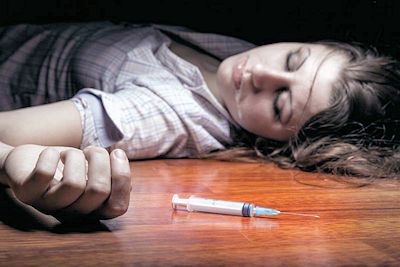
Chronic tramadol administration at a dose of 50 mg/kg causes histological abnormalities demonstrating oxidative stress-related apoptosis in the rat cortex. Nevertheless, tramadol overdose has been shown to cause brain congestion, edema, and inflammatory infiltrates in the rat. Recent studies have shown that tramadol increases oxidative stress in various body tissues, including the brain however, the extent to which this occurs in acute toxicity, if any, is unknown. However, the molecular and biochemical mechanisms of tramadol toxicity are still poorly understood. Tramadol overdose can lead to loss of consciousness, seizures, respiratory depression, serotonin syndrome, and death. Given the increasing numbers of tramadol overdose and fatalities in recent decades, this drug has been classified as a controlled substance in several countries. Tramadol is widely used worldwide as a centrally-acting analgesic to treat moderate to severe pain. However, none of the treatments improved sedation levels. The combined administration of naloxone and diazepam in acute-on-chronic tramadol poisoning can effectively reduce most seizure variables compared to tramadol use alone.

None of the protocols had a significant effect on sedation levels compared to the tramadol group. In the GEE model, all groups had higher sedation levels than the saline only group (P < 0.001). Chronic quercetin administration significantly increased the number of mild seizures. In comparison with the tramadol alone group, the acute quercetin group exhibited higher numbers of mild (level 2) and moderate (level 3) seizures. However, it increased the number of mild seizures (level 2). Diazepam decreased the severity and duration of seizures. Naloxone alone reduced the number and duration of seizures but increased the number of mild seizures (level 2). The naloxone-diazepam combination reduced the number, severity, and cumulative duration of seizures compared to tramadol use alone and reduced the number of higher-intensity seizures (level 3, 4) to a greater extent than other treatments. The significance level was set at P < 0.05.

#ACCIDENTAL OVERDOSE OF DIAZEPAM ANTIDOTE SOFTWARE#
Data were analyzed in SPSS software using Kruskal–Wallis, Chi-square, regression analysis, and generalized estimating equation (GEE) tests.

The sedation level was also assessed based on a 4-point criterion, ranging from 0 to 3. The rats were monitored for 6 h on the last day, and the number, the duration, and the severity of seizures (using the criteria of Racine) were measured over a 6-h observation period. On the 14th day, tramadol was injected at 75 mg/kg, either alone or together with naloxone, diazepam, and quercetin (acute and chronic) individually or in combination. Tramadol was administered intraperitoneally at an initial dose of 25 mg/kg/day. The rats were randomly assigned to eight groups. The project was performed with 72 male Wistar rats with an average weight of 200–250 g. This study aimed to evaluate the protective effects of naloxone, diazepam, and quercetin on tramadol overdose-induced seizure and sedation level in male rats. Substantial research has previously focused on the neurological effects of this drug, while the efficacy of various treatments to reduce the associated side effects has not been well studied. Tramadol is a widely used synthetic opioid.


 0 kommentar(er)
0 kommentar(er)
